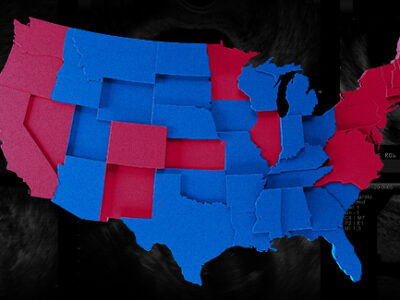I tend to avoid the immigration debate, which, for various reasons that agitate some of my conservative friends, does not get me riled up. Nonetheless, in the context of this debate, the Mexican leadership continues to make an outrageous analogy, one that needs to be answered.
Both the previous Mexican president, Vicente Fox, and the new one, Felipe Calderon, have compared the U.S. decision to construct an additional 700 miles of border fencing—authorized in October by a Senate bill signed by President George W. Bush—to the decision to build the Berlin Wall. Fox called the move an “embarrassment for the United States,” and Calderon dubbed the decision “deplorable.”
Actually, the analogy to the Berlin Wall is embarrassing and deplorable. The words “Berlin Wall” and “U.S.-Mexico border fence” should not be used in the same sentence, especially by educated men like Fox and Calderon, who ought to know better.
The first time I encountered this silly comparison was in the summer of 2001 while reading newly declassified minutes from the December 1987 Washington Summit between the United States and the Soviet Union. In their first one-on-one session of the summit, Ronald Reagan and Mikhail Gorbachev squared off on human rights—the issue that Reagan always raised first, and always to the consternation of Gorbachev.
While Reagan told Gorbachev that he was pleased that some Soviet Jews were finally being allowed to leave the Soviet Union, he believed that more should be permitted to emigrate. These hundreds of thousands of Soviet Jews were not permitted this basic human right. As he had at the previous two summits, Geneva and Reykjavik, Gorbachev bristled. The eventual Nobel Peace Prize winner snapped at Reagan, telling him that he was not an accused criminal standing trial and that Reagan was not a prosecutor. Gorbachev insisted that Reagan “had no right” to bring up such Soviet “domestic matters.” He then tried to turn the tables on Reagan, pointing to a U.S. Congressional proposal to build a fence along the Mexican border, which, said the Soviet general secretary, was as bad as anything the USSR had ever done.
Reagan realized this was utter nonsense. He replied that a border fence was meant to stop illegal immigration by people who wanted to join a free American society because its opportunities. This, said Reagan, was “hardly the same thing as building a Berlin Wall, which imprisoned people in a social system they didn’t want to be a part of.”
Gorbachev must have felt a little stupid. He hadn’t really thought through the issue. And, indeed, what applied to Gorbachev then should apply to Mexico’s leaders today. Consider these brief facts on the Berlin Wall:
The Berlin Wall was built for the purpose of holding captive a population of East Germans suffering under Soviet communism. Communism was so stifling that those who lived under it naturally tried to escape. The human drain was so constant that communist authorities built a wall, on top of which they placed barbwire, and along which they posted soldiers. Innocent, unarmed civilians who dared to try to leave—there was no such thing as “love it or leave it”—were simply arrested or shot, and hundreds were in fact killed.
The guards that patrolled this wall never needed to look westward for outsiders seeking to enter, since no foreigners wanted to sign up for life in the Communist Bloc, despite ongoing assurances from leftists in American universities who insisted that the people behind the Iron Curtain were just as happy as we Americans, and how dare we be so arrogant as to think our system was superior.
Needless to say, then, the Berlin Wall was quite different from the U.S. border with Mexico. The U.S. border is patrolled not to prevent, say, Texans from escaping a tyrannical America for the sunlight of freedom in Mexico, but, rather, because U.S. policymakers have concluded that America cannot accommodate all of those yearning to live here.
In short, a U.S. border fence with Mexico is a symbol of the freedom and desirability of our country. To the contrary, the Berlin Wall was a symbol of the lack of freedom and desirability of the communist world. The Berlin Wall was a cold, gray tombstone to human freedom, whereas America remains a beacon to human freedom.
The analogy by Fox and Calderon would only work if the Mexican government was building a wall to hold its citizens captive, to patrol them, to shoot them. Maybe Fox and Calderon should be careful with the comparison.
I suppose I can see how Mikhail Gorbachev couldn’t comprehend the difference between the wall separating Berlin and a fence separating America and Mexico. He was educated in a closed university system and got his news from Pravda.
As for Mexico, however, nearly all of its recent presidents are the product of American Ivy League colleges, principally Harvard, where they got their news from The New York Times. Shouldn’t they know better?
If Mexico’s leaders cannot grasp the simple difference between their border with America and the Berlin Wall, then their citizens have worse problems than I had thought.




